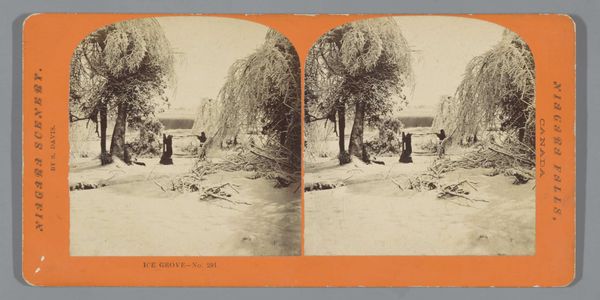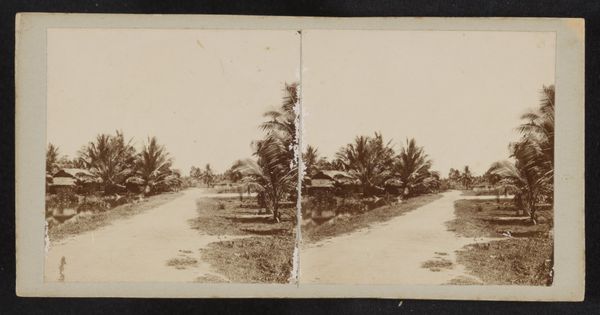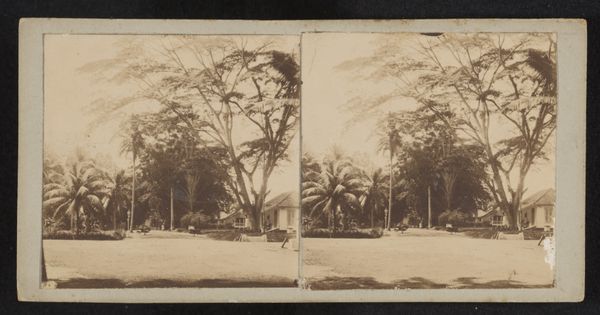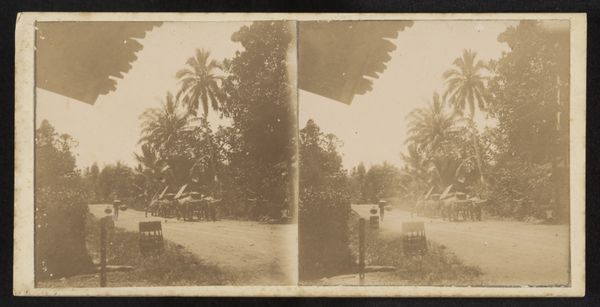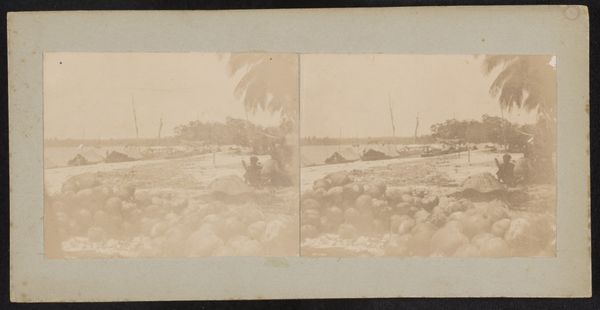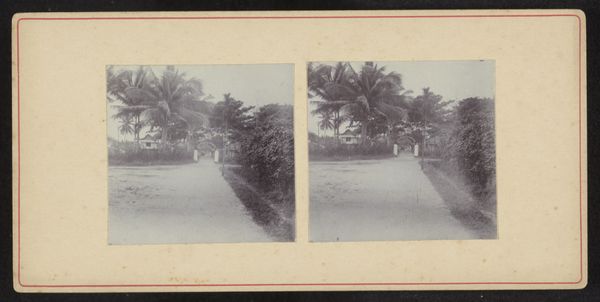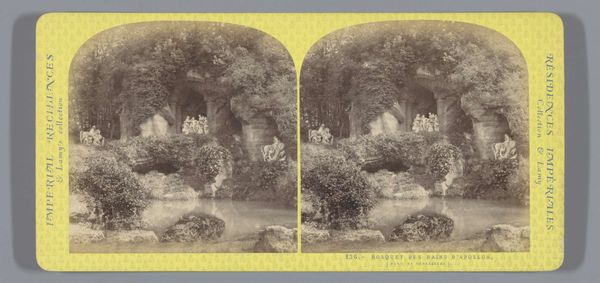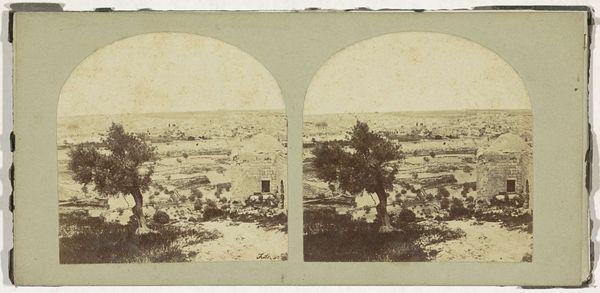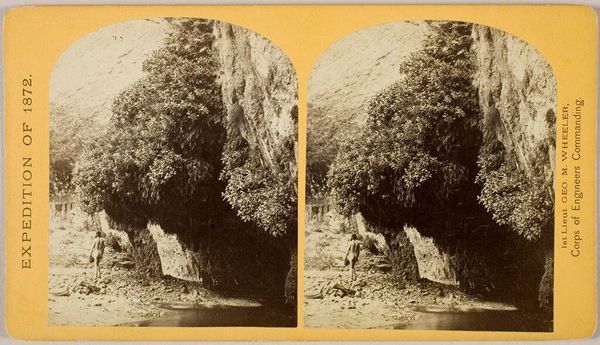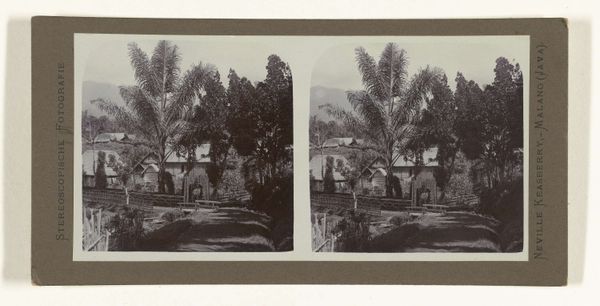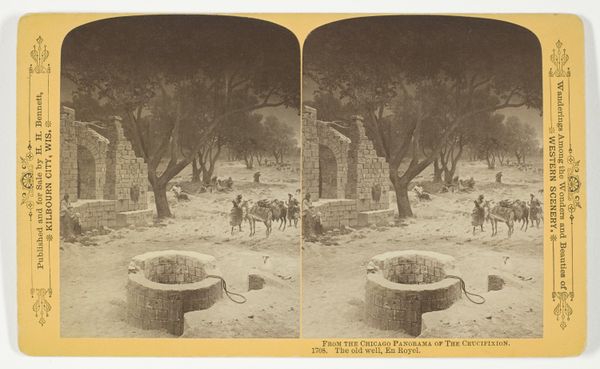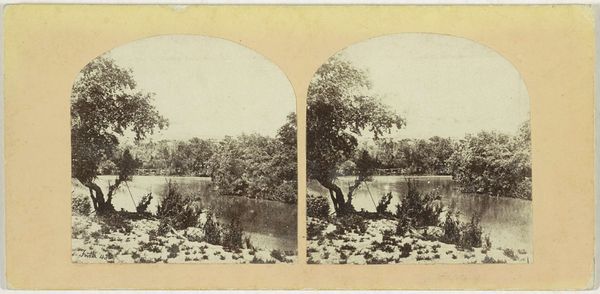
photography, albumen-print
#
16_19th-century
#
landscape
#
photography
#
orientalism
#
islamic-art
#
albumen-print
Dimensions: height 88 mm, width 178 mm
Copyright: Rijks Museum: Open Domain
Curator: I'm drawn to the subdued atmosphere, a sense of hushed reverence almost. Editor: It looks like a straightforward travel photograph, very much of its time. Here we have a view, rendered through an albumen print made sometime between 1868 and 1890, capturing palms and water near the Bab el Darb mosque in Biskra, Algeria. Curator: Exactly. That temporal context is key. It speaks to a romantic fascination with the "Orient", an imagined and often idealized world viewed through a Western lens. The figure, draped in white, adds to that air of mystery, fitting the visual tropes of Orientalism so popular then. This image pulls heavily on religious motifs and colonial perceptions of foreignness and identity. Editor: Indeed, we need to think about who produced it and why. Albumen prints were fairly laborious to produce and mass-produced in the period in particular formats like stereoviews. This method required extensive use of silver nitrate which makes them so fragile over time. They fed the European appetite for visual documentation and also contributed to a broader discourse about labor, colonialism, and control in image creation and the way photography normalizes a hierarchy in vision. The mass production using the albumen prints further emphasized the exoticism of these foreign lands. Curator: The mosque itself, only partially visible, represents a specific cultural and spiritual tradition, made vague, remote, and therefore available for consumption. It is reduced, turned into a picturesque element that reinforces stereotypical ideas. It lacks, I think, specificity that truly engages with place, faith or people. Editor: Right, the photographer isn't simply capturing a scene, they are constructing it in relation to the technological and market demands of the albumen process. The aesthetic we see emerges out of a complex web of economic interests, material possibilities and technological choices shaping how Algeria was visualized and circulated in Europe. Curator: I agree, examining these deeper implications truly brings it into sharper focus. Editor: Indeed. By examining both process and representation, the image speaks much more clearly.
Comments
No comments
Be the first to comment and join the conversation on the ultimate creative platform.
